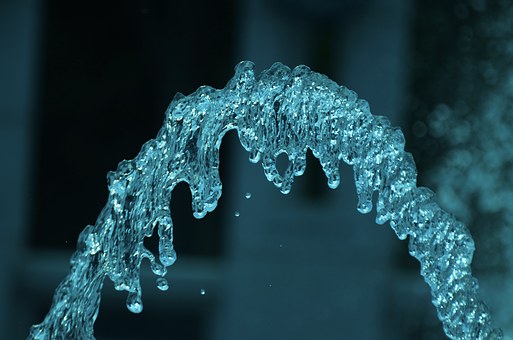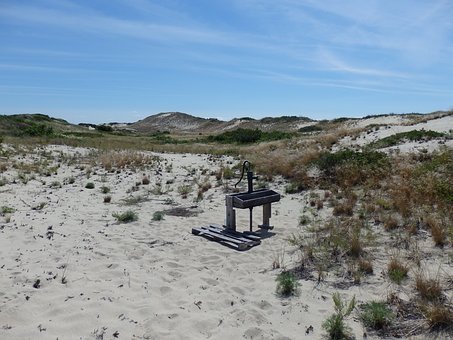ACQUA DAL SOLE. RICERCA AVANZATA - WATER FROM THE SUN. ADVANCED SEARCH
I dati dell’organizzazione mondiale della Sanità (OMS) parla 2 miliardi di persone che non ha accesso all’acqua potabile almeno per un determinato periodo dell’anno o comunque devono compiere lunghi spostamenti per ottenerla.
(http://www.who.int/water_sanitation_health/publications/glaas-report-2017/en/)
Per queste popolazioni estrarre l’acqua dall’atmosfera attraverso un procedimento di estrazione appunto dell’umidità sarebbe utile a livello sanitario e di alimentazione in generale ed eviterebbe persino l’insorgere di malattie.
Le attuali tecniche di estrazione però necessitano di due componenti essenziali. La prima che l’aria sia umida oltre una certa percentuale. La seconda è che servono grosse quantità di corrente elettrica per effettuare l’estrazione. Una volta catturata l’umidità infatti si dovrebbero raggiungere alte temperature per il suo rilascio.
I costi pertanto sarebbero stratosferici rispetto al risultato.

foto pixabay
La sfida è allora duplice: trovare un metodo per l’estrazione anche in climi aridi o comunque temperati e in presenza di poca umidità nell’aria, e sfruttare l’energia solare per alimentare il processo.
La ricerca ha evidenziato nuove tipologie di materiali, una sorta di cristallo poroso, creato dall’unione tra materiale organico e materiale metallico e denominato MOF o MOFS al plurale. Attraverso la combinazione dei due componenti (metalli – composti organici) è possibile regolare le loro interazioni chimiche in relazione al luogo in cui s’intende applicare il processo, così da avere procedimenti specializzati o idonei per i differenti climi.
Si tratta di strutture reticolari, quindi con pori più o meno grandi che possono ingabbiare tra le loro maglie liquidi e gas. Tali strutture a fronte di densità molto basse hanno superfici molto estese.
Funzionando con la luce del sole il dispositivo non necessiterebbe di altre risorse elettriche.
La ricerca dimostrerebbe come con solo un kilogrammo di materiale si potrebbero estrarre un paio di litri di acqua (2,8 per la precisione) anche in luoghi ove la percentuale d’umidità dell’aria si attesti al 20%.
Per la cronaca l’inventore di tali materiali è Omar Yaghi, professore di chimica presso la prestigiosa Università della California, Berkeley.

foto pixabay
Ma anche altre tecnologie si fanno avanti. La Zero Mass Water ha brevettato una sorta di pannello solare che senza collegamenti alla rete elettrica, ha solo una batteria al litio nel caso non ci sia il sole, estrae acqua dall’aria. Il fondatore, Cody Friesen, anch’egli professore, ma alla Arizona State University, afferma che la società ha istallato nell’ultimo anno, impianti in varie parti del mondo, dalla California agli Emirati Arabi, come si evince dal sito internet della società.
The data of the World Health Organization (WHO) speaks 2 billion people who do not have access to drinking water at least for a certain period of the year or in any case have to make long journeys to obtain it.
(Http://www.who.int/water_sanitation_health/publications/glaas-report-2017/en/)
For these populations extracting water from the atmosphere through a process of extraction precisely of humidity would be useful at the health and nutrition level in general and would even prevent the onset of diseases.
Current extraction techniques however require two essential components. The first that the air is humid beyond a certain percentage. The second is that they need large amounts of electricity to carry out the extraction. Once the humidity has been captured, high temperatures should be reached for its release.
Costs therefore would be stratospheric compared to the result.
The challenge is then twofold: find a method for extraction even in arid or otherwise temperate climates and in the presence of low humidity in the air, and exploit solar energy to fuel the process.
The research highlighted new types of materials, a kind of porous crystal, created by the union between organic material and metallic material and called MOF or MOFS in the plural. By combining the two components (metals - organic compounds) it is possible to adjust their chemical interactions in relation to the place where the process is to be applied, so as to have specialized or suitable procedures for different climates.
These are reticular structures, therefore with more or less large pores that can cage between their liquid meshes and gas. These structures with very low densities have very large surfaces.
Working with sunlight, the device would not require other electrical resources.
Research shows that with just one kilogram of material, a couple of liters of water could be extracted (2.8 to be precise) even in places where the percentage of humidity in the air is 20%.
For the record, the inventor of these materials is Omar Yaghi, professor of chemistry at the prestigious University of California, Berkeley.
But other technologies are also coming forward. The Zero Mass Water has patented a sort of solar panel that without connections to the electricity grid, only has a lithium battery in case there is no sun, it extracts water from the air. The founder, Cody Friesen, also a professor, but at Arizona State University, says that the company has installed in the last year, plants in various parts of the world, from California to the United Arab Emirates, as can be seen on the company's website.